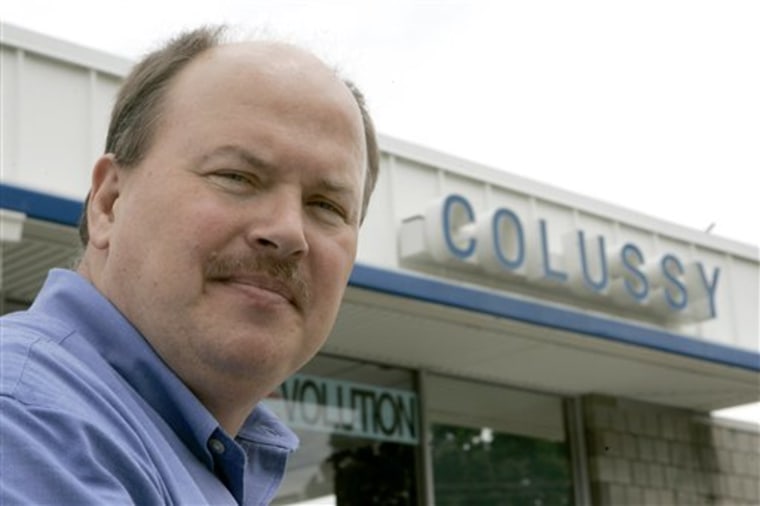A box that sends puffs of new car-scented air into his Chevrolet dealership's service lane is just one of the tricks Tim Colussy is using these days to entice buyers to come to his Pittsburgh-area dealership for servicing.
Colussy Chevrolet in Bridgeville, Pa., also has repainted and sealed the floors, brightened the lights and added new signs and displays in its service area. In the customer waiting area, there's a new flat-screen TV, WiFi access, workstations and a coffee bar.
Colussy said the dealership's efforts have paid off with a 10 percent increase in service business so far this year.
"We are selling a lot more tires than we ever have before and general maintenance items — things that a lot of time customers were drifting away from in the dealer departments," he said. "We're making a much stronger effort to educate our customer that we offer these services and are doing them on a very competitive basis."
It's hard to overestimate the importance of parts and service to dealers' profits. Dealerships typically get half their profits from service, with the rest coming from new and used car sales, according to Paul Taylor, chief economist with the National Automobile Dealers Association.
But with new car sales plummeting — the average dealer lost money on new cars in 2006 and 2007, and sales could hit their lowest level in more than a decade this year — dealers are racing to renovate body shops, add dedicated lanes for quick oil changes and compete more aggressively with independent repair shops and big chains. In a 2007 NADA survey, 29 percent of dealers said they recently had upgraded their service departments.
Dealers have been doubly squeezed because improvements in quality have significantly cut down on the number of warranty repairs they perform and have lengthened the time between service appointments. GM, for example, uses a sophisticated monitoring system to tell customers when they need to change their oil depending on their driving habits, so drivers no longer automatically come in for a change every 3,000 miles.
"We don't have the warranty anymore as the trigger to bring someone in," Peter Lord, executive director of service operations at General Motors Corp., said during a recent event at a GM service center in the Detroit suburb of Warren. "Warranty repair is now the exception. It's the routine maintenance we have to be prepared for."
Wes Lutz, owner of Extreme Dodge Hyundai in Jackson, said five to 10 years ago, 80 percent of his service business was in warranty repairs and 20 percent was in customer-paid repair work. Now, that has completely reversed, he said.
"We really don't have any warranty issues anymore," he said. "We had to learn to adjust how we take care of customers."
Aware of the difficulties — and of the fact that good service can increase sales — automakers are keen to help. Lord said customers are eight to nine times more likely to return to a dealership when they're ready to buy if they've been happy with the sale and the service.
That's an eye-opening statistic at GM, where just three in 10 owners come back to dealers for servicing over the life of their vehicles. If even one more owner in 10 came back to the dealer for service and was happy with the experience, that could translate into 360,000 vehicle sales over five years, Lord said. But it's a difficult leap, since the average GM dealer has 50 service competitors, he said.
"If you haven't got a good, strong service department now, it's difficult to create one overnight," he said.
Enter the GM-developed scent, which soon will waft through dealerships nationwide. To Lord, it smells like the leather in a Cadillac. GM also is working with dealers to promote service departments and technicians, who are trained to work on increasingly complicated vehicles.
"We are helping to teach our dealers to merchandise service," Lord said. "It certainly helps a dealer through challenging times."
Lord said import brands typically have more customers return to dealerships for service, since independent repair shops may not have the training to work on those brands. Toyota Motor Corp. spokesman Xavier Dominicis said Toyota's rate is higher than GM's, particularly for the Prius hybrid, but the company wouldn't release figures.
At Extreme Dodge Hyundai, Lutz is trying to win customers by listing the most common maintenance items on an electronic message board and calling around town once a month to get pricing on those services from five competitors.
"We can't be more expensive. People have lots of places to spend their money," he said.
He said the hourly labor rate at dealers is about the same as other garages. If the rate is higher, it's because dealers use more expensive factory replacement parts rather than those made by aftermarket manufacturers, Lutz said.
He also promotes that his dealership has invested in Internet connections at every service bay and diagnostic equipment that can connect straight to engineers at Chrysler LLC.
Colussy said he initially was skeptical about the GM scent, but he's gotten such positive feedback that he plans to put another machine in the showroom. Colussy said between 15 and 18 percent of his new car customers come back for service in the first year, a number he'd like to raise to 30 percent by the end of this year.
"We're trying to create and build trust with customers, and we want it to be as comfortable an environment and as pleasing an environment as it can be," he said.
